58TH ANNUAL CONFERENCE, Conchal, Costa Rica, 20-24 May 2019Agenda Item: B.5.9 – WP No. 93Policy Review: Strategic Lateral Offset Procedures (SLOP)Presented by TOC |
Summary
Global navigation satellite systems and advanced flight management systems have improved the accuracy of navigation so that aircraft are rarely further than their wingspan away from their intended route. Aircraft operating along the same route are more likely to laterally overlap one another and in the case of an error or blunder, the aircraft could collide. Strategic lateral offset procedures (SLOP) are intended to mitigate the collision risk arising from increased navigational accuracy.
ICAO provisions for SLOP have evolved over time: originally SLOP was limited to aircraft in oceanic non-surveillance airspace, but it may now be implemented in all en route airspace. When SLOP is implemented, the magnitude of the offset is determined by the route spacing and separation minima that applies in the airspace.
IFATCA currently has provisional policy for SLOP, but it has become outdated with the latest changes to ICAO provisions and guidance; therefore, this paper will propose introducing new full policy regarding SLOP.
Introduction
1.1 With the advent of global navigation satellite systems (GNSS) and advanced flight management systems, the accuracy with which aircraft are navigated along their intended route has improved significantly. Today aircraft navigating using GNSS are often no further than their wingspan away from the published route centreline; therefore, aircraft that are operating along the same route are much more likely to laterally overlap one another. In the case of an operational error or blunder (such as an aircraft operating at a level not expected by the controller) aircraft on the same route could collide, with potentially catastrophic consequences.
1.2 Strategic lateral offset procedures (SLOP) provide a means of mitigating the collision risk arising from increased navigational accuracy. IFATCA has provisional policy on SLOP; however, the policy has become outdated and needs review in light of recent changes and anticipated developments.
Discussion
2.1 Background
2.1.1 Strategic lateral offset procedures (SLOP) were first proposed in ICAO State Letter AN 13/11.6- 00/96 dated 3 November 2000 and the global procedures have been under periodic development ever since. SLOP was first developed for use in the North Atlantic oceanic airspace and is intended to reduce the probability of lateral overlap due to increased navigation accuracy (ICAO 2016, p. 16-6). SLOP can also reduce the probability of wake turbulence encounters although its effectiveness in this regard depends on traffic disposition and atmospheric conditions.
2.1.2 SLOP achieves its goals by providing for aircraft to offset to the right of their route by any one of a number of pre-defined distances. The 16th edition of PANS-ATM effective 2016 makes provision for two methods of SLOP in en route airspace:
a) in airspace where the lateral separation minima or the spacing between route centrelines is ≥23 NM, aircraft may offset by any 0.1 NM increment up to 2 NM; and
b) in airspace where the lateral separation minima or the spacing between route centrelines is ≥6 NM and <23 NM aircraft may offset by any 0.1 NM increment up to 0.5 NM (ICAO 2016, p. 16-6).
2.1.3 The ICAO provisions will be updated in November 2020 to accommodate new space-based ADS-B and other separation minima. The updated provisions are expected to be as follows:
a) in airspace where the lateral separation minima or the spacing between route centrelines is ≥15 NM, aircraft may offset by any 0.1 NM increment up to 2 NM; and
b) in airspace where the lateral separation minima or the spacing between route centrelines is ≥6 NM and <15 NM aircraft may offset by any 0.1 NM increment up to 0.5 NM (ICAO 2019, p. 24).
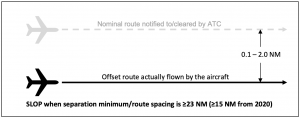
(Figure 1a: ICAO SLOP provisions effective from 2016 and planned to be effective from 2020)
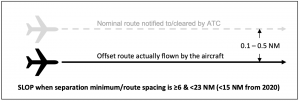
(Figure 1b: ICAO SLOP provisions effective from 2016 and planned to be effective from 2020)
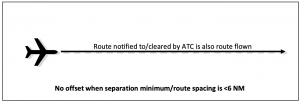
(Figure 1c: ICAO SLOP provisions effective from 2016 and planned to be effective from 2020)
2.1.4 It is important to note that the ICAO SLOP provisions are only intended to prevent collisions between aircraft and are not intended to achieve separation minima. Controllers cannot use SLOP to achieve separation between aircraft.
2.2 The difference between route spacing and separation minima
2.2.1 ICAO provisions for SLOP are dependent on either the route spacing or the separation minimum that applies in the airspace, so it is important to understand the difference between the two terms and under what circumstances each may be the determinant of SLOP.
2.2.2 In airspace where air routes converge overhead navaids and waypoints like the spokes of a wheel, the spacing between routes is infinitely variable (see Figure 2) so it is the separation minimum applied between aircraft that determines if SLOP can be applied.
2.2.2.1 Example: Air routes in FIR A converge over a number of ground-based navigation aids while some area navigation routes criss-cross this structure, giving a constantly varying route spacing of between 0 and 100 NM; there is good surveillance coverage and the horizontal separation minimum is 5 NM. In this airspace the separation minimum is what determines the availability of SLOP: because the separation minimum is less than 6 NM, SLOP is not available.

(Figure 2: A hybrid of traditional air routes between ground-based navigation aids and area navigation routes. The value of the separation minimum is what determines the availability of SLOP)
2.2.3 In some airspace, air routes are highly structured to provide a constant distance between routes (see Figure 3). In such a highly-structured environment, the distance between routes is what determines if SLOP can be applied.
2.2.3.1 Example: In FIR B the air routes are highly structured in an east-west fashion and are spaced by a constant 50 NM; there is no surveillance coverage and the lateral separation minimum is 30 NM. In this case, the availability of SLOP is determined by the route spacing rather than the separation minimum and the 50 NM route spacing allows SLOP of 0-2.0 NM.
2.2.3.2 Example: In FIR C the air routes are highly structured in an east-west fashion and are spaced by a constant 8 NM; there is good surveillance coverage and the separation minimum is 5 NM. In this case, the availability of SLOP can be determined by the route spacing rather than the separation minimum and the route spacing of 8 NM allows SLOP of 0-0.5 NM. In this instance, the existing IFATCA policy regarding transparency may not be appropriate and this will be discussed in the next section of the paper.
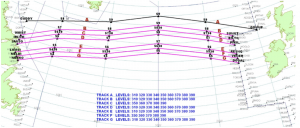
(Figure 3: An organised track structure with constant spacing between routes – the distance between the routes is what determines the availability of SLOP)
2.3 IFATCA policy and its development over time
2.3.1 IFATCA’s existing provisional policy on SLOP is detailed in ATS 3.16: (Advanced) Strategic Lateral Offset Procedures (IFATCA 2018, p. 111):
| IFATCA endorses Strategic Lateral Offset Procedures (SLOP) in oceanic or remote continental airspace where there is no ATS surveillance service provided.
IFATCA only supports an advanced strategic offset concept provided that:
|
(IFATCA. (2018). TPM, 2018 Ed., ATS 3.16)
2.3.2 When this provisional policy was formulated in 2008 and 2009, SLOP was solely an oceanic procedure and allowed for offsets of either 1 or 2 NM to the right of route. Offsetting in other airspace was seen as desirable but a globally harmonised procedure had not yet been developed; therefore, the policy remained provisional and it focussed on the requirements for future developments.
2.3.3 The following table provides a timeline of the development of ICAO offset procedures and the development of IFATCA policy on SLOP:

2.3.4 The table above demonstrates how IFATCA policy on the issue of SLOP has fallen behind developments at ICAO. In order to encourage efforts by industry bodies and provide guidance to IFATCA’s representatives at ICAO, it is of the utmost importance that IFATCA maintains its policies to both reflect current ICAO provisions and influence the development of future provisions.
2.4 Analysing IFATCA policy
2.4.1 In order to determine the best way forward for IFATCA policy, each fragment of the policy detailed in 2.3.1 will be analysed for ongoing appropriateness.
2.4.2 IFATCA endorses Strategic Lateral Offset Procedures (SLOP) in oceanic or remote continental airspace where there is no ATS surveillance service provided.
2.4.2.1 SLOP is no longer limited by ICAO to oceanic and remote continental airspace outside ATS surveillance coverage and there should be no basis for IFATCA opposing a properly- implemented SLOP regime in regular continental airspace with ATS surveillance in accordance with ICAO provisions.
2.4.3 IFATCA only supports an advanced strategic offset concept provided that:
- studies conclude that the concept enhances safety;
- the concept is globally harmonised;
- the concept is taken into account in airspace and procedures design;
- ATC surveillance systems accommodate the concept; and
- the concept is transparent to ATC, requiring no controller intervention at all.
2.4.3.1 Advanced SLOP was the term given to SLOP that, when the provisional policy was formulated, was to be developed for use in continental airspace. Advanced SLOP was also sometimes called micro SLOP and is equivalent to the current PANS-ATM provision for SLOP of 0.1-0.5 NM in airspace where route spacing or separation is ≥6 NM and <23 NM.
2.4.3.2 In order to further analyse the provisional policy, each dot point in the policy specified in 2.4.3 will be addressed individually.
2.4.3.3 Studies conclude that the concept enhances safety.
2.4.3.3.1 ICAO details the safety activities of the Separation and Airspace Safety Panel (SASP) in Implementation of Strategic Lateral Offset Procedures (Cir 331), published in 2014.
2.4.3.3.2 The SASP found that SLOP can significantly reduce collision risk for same-direction and opposite-direction traffic on the same route. When investigating parallel non-intersecting routes, the effect of SLOP on collision risk was found to depend on the disposition of the traffic: if aircraft offset away from each other, collision risk is reduced (see Figure 4); however, if aircraft offset towards each other, collision risk is increased (see Figure 5). Finally, the case of intersecting tracks was considered and the effect on collision risk was found to vary with the track intersection angle as the aircraft may operate closer or further away than they otherwise would without SLOP (ICAO 2014, pp. 10-34).

(Figure 4: If aircraft on P440 and P555 both offset to the right, they will pass further away than if they did not offset)

(Figure 5: If aircraft on Y19 and Q53 both offset to the right, they will pass closer than if they did not offset)
2.4.3.3.3 The SASP concluded that the SLOP procedures detailed in PANS-ATM are safe; therefore, this policy has been achieved and may be deleted. States must still undertake an implementation safety assessment prior to the implementation of SLOP, which will include a hazard assessment that identifies and controls any local-specific situations (ICAO 2014, p. 35).
2.4.3.4 The concept is globally harmonised
2.4.3.4.1 The procedures for all types of SLOP are published in PANS-ATM and guidance for implementation of these procedures is published in ICAO Circular 331; however, there are parts of the world where SLOP is applied in a manner other than that envisaged by ICAO. Some ANSPs require pilots to notify controllers when they are applying SLOP while other ANSPs use procedures that instruct aircraft to offset by 3 NM or more. Offsets of 5 NM or more may even be used to effect separation; however, this is contrary to the ICAO SLOP provisions, which are intended to reduce collision risk and wake turbulence encounters – not to provide separation.
2.4.3.4.2 The PANS-ATM procedures provide a globally harmonised concept for SLOP. Although there will always be some unique local issues, now that globally harmonised procedures for SLOP exist, it is desirable that its implementation is in accordance with those procedures. This paper will propose in its conclusion to update the existing policy to encourage implementation of SLOP in accordance with the ICAO procedures.
2.4.3.5 The concept is taken into account in airspace and procedures design
2.4.3.5.1 Airspace and procedure design remains the responsibility of the States but ICAO guidance informs States or regions that they must ‘Develop an airspace design concept or ensure that the proposed procedure being implemented will fit the current airspace system and regional or State airspace planning strategy’ (ICAO 2014, p. 46).
2.4.3.5.2 As this policy is included in ICAO guidance, it is achieved and may be deleted.
2.4.3.6 ATC surveillance accommodates the concept
2.4.3.6.1 ICAO (2016, p. 16-6) stipulates that route conformance monitoring systems shall account for the application of SLOP; therefore, when States implement SLOP, they should ensure that their automation systems are updated as required to take offsets into account. It’s important that this occurs because without it, controllers could receive frequent nuisance route conformance alerts, desensitising controllers to safety nets.
2.4.3.6.2 This policy has been achieved because it is included in ICAO provisions; however, it remains particularly important for controllers that their automation systems do not activate route conformance alerts for aircraft correctly carrying out SLOP. This paper will propose in its conclusion to retain this element of the provisional policy because of its importance for controllers.
2.4.3.7 The concept is transparent to ATC
2.4.3.7.1 The SLOP concept is transparent to controllers to a certain extent. The PANS-ATM provisions (ICAO 2016, p. 16-6) say that pilots are not required to inform ATC that a strategic lateral offset is being applied; however, they also say that controllers should still be made aware of SLOP when it is authorised for use in their airspace.
2.4.3.7.2 When SLOP was solely applied outside surveillance coverage, the procedure could be said to be completely transparent to controllers as they would have no way of observing the offset and pilots were not required to notify controllers. As ICAO provisions now permit SLOP inside surveillance coverage, controllers with surveillance may observe aircraft making small or large turns to establish or end their offset (especially at the boundaries of SLOP airspace). Applying the minimum surveillance separation may be unadvisable in some areas where aircraft regularly establish and/or end SLOP and therefore, complete invisibility of SLOP to controllers is no longer a desirable aim and not appropriate IFATCA policy.
2.4.3.7.3 As this policy is no longer relevant, this paper will propose in its conclusion that it should be updated to ensure that controllers are made aware when SLOP is authorised in their airspace.
2.5 Who has implemented SLOP?
2.5.1 The implementation of SLOP varies around the world. SLOP has been widely implemented in the North Atlantic, from where the concept originated. In the Asia/Pacific region, SLOP is also widely implemented; however, most ANSPs have only implemented 1 or 2 NM offsets rather than the smaller 0.1-0.5 NM offsets. In Africa, SLOP has been implemented in some FIRs while IFALPA and IATA recommend that their members apply SLOP as best practice in other FIRs. There has been limited implementation of SLOP in South America and continental Europe.
2.6 Aircraft and their flight management systems
2.6.1 Automatic offset tracking capability is a requirement for an aircraft to participate in SLOP. A flight management system with automatic offset tracking capability can create a route parallel to the active route, then intercept and fly that route when executed by the pilot.
2.6.2 Most flight management systems in service today can execute an automatic offset track in whole nautical miles. Unfortunately, as offsetting by tenths of a nautical mile was only introduced in ICAO provisions in 2014, most flight management systems are currently incapable of executing such offsets. Of the major aircraft and flight management system combinations in production, only the Boeing BBJ, 737 and 787 are currently capable of offsetting in tenths of a nautical mile. Depending on the aircraft mix in the airspace, even if a State permits offsetting in tenths of a nautical mile, the majority of aircraft may not be able to participate in this SLOP, and the full benefits may not be realised.
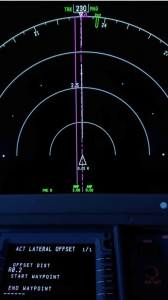
(Figure 6: Offsetting by 0.2 NM in a Boeing 737-800)
2.6.3 Example: FIR D permits SLOP in increments of 0.1 NM up to 0.5 NM; however, most aircraft that operate in FIR D are older aircraft with basic equipment and they are incapable of offsetting at distances of less than 1 NM.
2.7 IFALPA policy on SLOP
2.7.1 IFALPA strongly supports, and was the primary driver behind, the use of SLOP: IFALPA’s advocacy of SLOP increased after the collision of an E135 and a B738 in Brazil in 2006. IFALPA policy is that ATS routes shall be designed with SLOP in mind and GNSS-referenced aircraft navigation systems should have programmed into them a default lateral offset value.
2.8 Is SLOP still a good thing?
2.8.1 Where it works well
2.8.1.1 As discussed earlier, the increased navigational accuracy of modern aircraft can increase the risk of collision in case of a gross error or blunder. ICAO has determined that SLOP can reduce this collision risk for many types of traffic such as same- and opposite-direction aircraft on the same route.
2.8.1.2 The increase in the application of free- and flexible-route concepts could be expected to reduce the instances of same- and opposite-direction aircraft laterally overlapping and therefore reduce the potential for collision; however, real-world experience shows that this is not necessarily the case. Where free- and flexible-route concepts are implemented in parallel with existing two-way route structures, aircraft operators with simple flight planning tools may decide that the cost of manual intervention in planning a free-route is prohibitive and instead plan via the route structure. Operators that chose to plan free-routes often use similar flight planning software, analysing similar wind data optimised for similar aircraft and often reach the same conclusion when determining the optimal route between city pairs. Additionally, airlines in alliances and strategic partnerships often contract the same third party to plan their flights from outstations. These factors can lead to the bunching of flights along identical and near-identical routes, limiting the ability of free- and flexible-routes to reduce the risk of collision between aircraft and thereby increasing the effectiveness of – and necessity for – SLOP.
2.8.1.3 While free- and flexible-route concepts and one-way area navigation routes are popular in some parts of the world, other parts of the world still rely on fixed two-way routes between ground- based navigation aids. Coordination between some ANSPs is limited, inefficient or non-existent and some automation systems are poorly designed or implemented. Because of these factors, SLOP is still an important procedure that contributes to reducing the risk of collision in en route airspace.
2.8.1.4 Example: Although not fully implemented in the AFI region, many ANSPs have implemented SLOP and IFALPA recommends that its members apply SLOP as much as possible in order to reduce collision risk in environments with challenging communication, navigation and surveillance (IFALPA 2017, p. 6).
2.8.2 Where it doesn’t work so well
2.8.2.1 Although offset procedures are now available for route spacing or separation ≥6 NM, the limited range of flight management systems that are currently capable of maintaining an offset less than 1 NM means that most aircraft are incapable of taking advantage of this offset procedure where it has been implemented.
2.8.2.2 In response to increasing traffic volumes, and thanks to relatively cheap new surveillance technology, some ANSPs are introducing surveillance in areas that were previously controlled procedurally and which feature traditional route structures based on ground-based navigation aids. If surveillance is used to provide a separation minimum <6 NM in airspace without a constant route spacing, there are no ICAO provisions for the application of SLOP and aircraft must be navigated along the route centreline.
2.8.2.3 Example: Australia was a pioneer of using ADS-B for the provision of surveillance services and 5 NM separation; however, the surveillance was ‘overlaid’ on the existing route structure without a larger re-evaluation of the airspace concept, so the majority of routes are variably spaced two- way routes between ground-based navigation aids. The introduction of 5 NM surveillance separation has precluded SLOP from Australian continental airspace, so aircraft (the majority of which are equipped with RNP 4 and RNP 2) navigate with great accuracy along the centrelines of two-way routes in vast and otherwise empty airspace. In the case of an aircraft operating at an unexpected level, it is likely that it will laterally overlap with other aircraft on the same route, increasing the risk of collision.
Conclusions
3.1 SLOP reduces the risk of modern, accurately-navigated aircraft colliding in case of gross navigational errors or blunders. The ICAO SASP has examined the effect of SLOP on collision risk and determined that SLOP is a safe procedure although an implementation safety assessment must be conducted in order to account for local particularities prior to implementation.
3.2 SLOP was initially an oceanic procedure, but its use has expanded to continental airspace both within and outside surveillance coverage. The minimum route spacing or separation minimum required for SLOP has reduced from 50 NM to 6 NM, and the offset distances have changed from 1-2 NM to 0.1-2.0 NM.
3.3 If ANSPs introduce surveillance separation standards and/or smaller procedural separation minima without re-evaluating the airspace concept, SLOP may be precluded despite increasing aircraft navigational accuracy and increasing traffic volumes.
3.4 IFATCA policy on SLOP has become outdated given the recent developments in ICAO provisions and guidance and also in light of the expected changes that will occur in November 2020. All aspects of the existing IFATCA policy have either been achieved or are no longer desirable given the expansion of SLOP to all airspace both inside and outside surveillance coverage. Most of the existing provisional policy may now be deleted; however, those aspects that most affect controllers should be retained in order to highlight their continued importance.
Recommendations
4.1 It is recommended that existing IFATCA provisional policy ATS 3.16: (Advanced) Strategic Lateral Offset Procedures:
IFATCA endorses Strategic Lateral Offset Procedures (SLOP) in oceanic or remote continental airspace where there is no ATS surveillance service provided.
IFATCA only supports an advanced strategic offset concept provided that:
- studies conclude that the concept enhances safety;
- the concept is globally harmonised;
- the concept is taken into account in airspace and procedures design;
- ATC surveillance systems accommodate the concept; and
- the concept is transparent to ATC, requiring no controller intervention at all.
is deleted.
4.2 It is recommended that IFATCA policy is:
Where SLOP is implemented:
- it shall be in accordance with ICAO provisions;
- ATM systems shall accommodate the concept; and
- controllers shall be trained in the procedure and its implications.
And is included in the IFATCA Technical and Professional Manual ATS 3.16 (Advanced) Strategic Lateral Offset Procedures.
References
ICAO (2014), Implementation of Strategic Lateral Offset Procedures (Cir 331), Montréal
ICAO (2016), Procedures for Air Navigation: Air Traffic Management (Doc 4444) (16th ed.), Montréal
ICAO (2019), Preliminary review of proposed amendments to the PANS-ATM relating to reduced separation minima, special procedures for in-flight contingencies in oceanic airspace and SLOP arising from the second meeting of the Separation and Airspace Safety Panel (SASP/2) (AN- WP/9288), Montréal
IFALPA (2017), Briefing Leaflet: Recommended Procedures in the AFI Region (17ATSBL07), Montréal
IFATCA (2018), IFATCA Technical & Professional Manual 2018, Montréal


